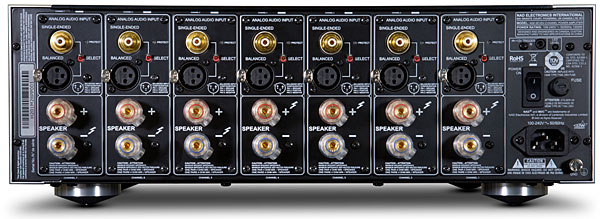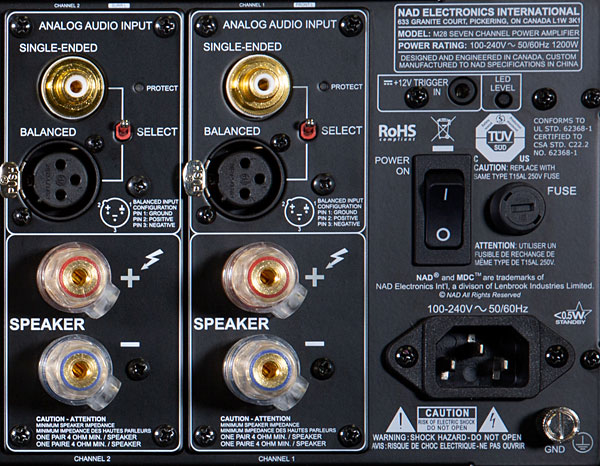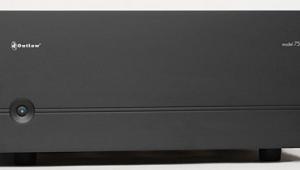NAD Masters M28 Seven-Channel Power Amplifier Review

AT A GLANCE
Plus
Exceptional performance
Exceptional build quality
Dimmable power indicator light
Minus
Pricey
THE VERDICT
It doesn’t come cheap, but NAD’s Masters M28 is a genuinely unique product designed to compete sonically with some of the highest-end amps on the market, regardless of how many channels they offer.
Whether you fall into the "all well-designed amps sound the same when used within their limits" camp or the "amp selection is critical" army of true believers, it's arguable that prior to the turn of the millennium amps designed for high-performance audio had fallen into a rut. They were so good that the advertising for them had to become increasingly creative. But a parade of skilled designers remained convinced that the new concepts they had come up with were superior, and audiophiles still lined up to buy them. The turf was always familiar: tubes remained tubes with their lovable quirkiness, and solid state was dominated by class-A/B designs as it had been since the transistor was invented.
Meanwhile the digital era gathered steam, although digital implementations were slow to crash the well-entrenched amp party. An early design from Bang & Olufsen called ICEpower was dubbed class-D for obvious reasons. There were undeniable benefits to class-D, particularly its high efficiency: While class-A/B designs are lucky to achieve around 60 percent efficiency with the remaining energy simply turned into heat, a class-D amp can reach above 90 percent.
A few years after birth of class-D, a young engineer at Philips in Belgium, Bruno Putzeys, designed his own version of a digital amp. He called it UcD for "Universal class-D." A range of variations followed as Putzeys moved on from Philips to Hypex, where the latter marketed (and still does) products based on his designs.
Putzeys is now with Purifi, a company he helped found along with Lars Risbo, Peter Lyngdorf, and others. Purifi's first class-D digital module is Putzeys' latest brainchild: the 1ET400A, or as it's better known, the Eigentakt (for self-clocking). But a class-D amp requires more than just a module; it also needs a power supply, an input driver stage, and high frequency filtration to strip away ultrasonic noise arising from the pulse-width modulation used in class-D processing.

NAD is one of the first licensees for the PuriFi module and is currently using it in both its Masters Series M33 integrated streaming amplifier and the NAD Masters M28, the seven- channel power amplifier reviewed here. A two-channel NAD power amp using this module, the C 298, is also available. (The company's current A/V receiver line doesn't use the Eigentakt design.)
Description
The NAD M28 is rated at 200 watts per channel into 8 ohms and 340Wpc into 4 ohms, in both cases with all channels driven at a specified THD of 0.003%. Both balanced and unbalanced inputs are provided for all seven channels. While not a featherweight at just under 47 pounds, the M28 is easy to maneuver into position.
A power indicator on the front panel glows a dim red when in standby with the unit plugged in and the rear main power switch on. When you touch a contact sensor located at the top of the front panel, the indicator turns bright red and then white after a few seconds, indicating full-on. A tiny, well-hidden switch on the back panel lets you select three different brightness levels, or you can turn it fully off. After 30 minutes with no input signal the amp automatically switches to standby (there's no option to defeat this timed shutdown). There's also a single 12-volt trigger input to turn the NAD on or off remotely.

The M28 is not just solidly built but also one of the best- looking amplifiers I've ever reviewed. You won't want to hide it away—a good reason for that dimmable front-panel light switch.
Setup
While the M28 is certainly compatible with quality surround sound preamps such as NAD's own M17 V2i (not surprisingly, this is NAD's recommended pairing), it's also compatible with the preamp outputs of a good A/V receiver for users who might want to maintain their existing front- end—at least for now—while first upgrading their amplifiers. For this test, I used a Denon AVR-X6700H A/V receiver, supporting a 5.2.4 speaker configuration.
I began my listening with two- channel music and no subs, with the Denon's left and right preamp outputs driving just two of the NAD's five channels. (It's far easier to get a grasp on the sound of a product or system without introducing the aural complexity of multichannel.)






























































